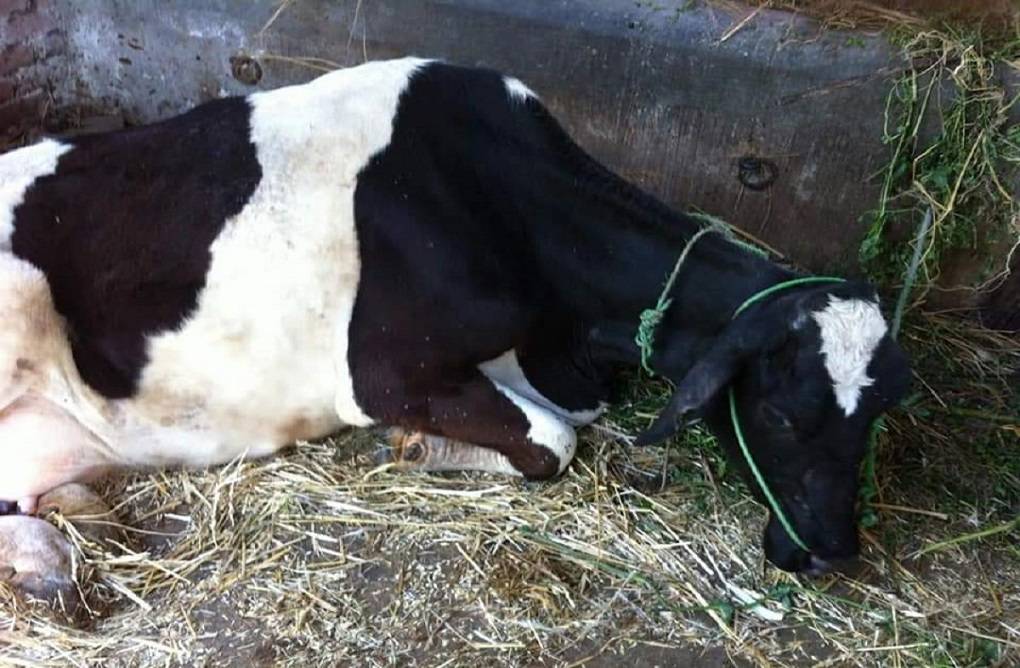
Anaplasmosis is an infectious parasitic disease of cattle caused by the pathogen Anaplasma marginale. The pathogen multiplies in the bloodstream where it invades red blood cells, which destroys the animal’s immune system. The disease occurs in cattle all across the world and is very costly to producers in terms of cattle losses, reduced productivity, and reproductive disorders. It has no impact on human health or food safety.
Causes of Anaplasmosis
Anaplasmosis is a disease that plagues cattle and other domestic or wild ruminants. It is caused by the bacteria Anaplasmosis marginale which affects the production of red blood cells. This disease is usually transmitted when blood is exchanged between animals through ticks or other pests, or through human-caused contamination, such as using the same needle on more than one animal or not properly taking care of the equipment that comes in contact with blood, including taggers, castration equipment, dehorning equipment, and tattooing instruments.
Symptoms of Anaplasmosis
These are some of the symptoms of anaplasmosis-
-
Anaplasmosis causes anaemia in adult cattle, which means that the bloodstream of the cattle has an abnormally low number of red blood cells circulating. This leads to oxygen deprivation to the vital organs. Oxygen deprivation can also lead to aggression in cattle.
-
Infected cattle will show signs of staggering, rapid breathing, foaming from the mouth, and weakness.
-
They will also have a fever, lose weight rapidly, and avoid eating food.
-
Oftentimes, pregnant cows will abort their cows due to the infection.
-
Younger cattle, rarely exhibit signs of infection caused by this disease because of the rapid production of new red blood cells.
-
Decreased milk production
-
Loss of coordination
-
Temporary infertility in bulls
-
Severe anaemia in pregnant cows, leads to abortion.
-
Rapid pulse
Prevention of Anaplasmosis
Handlers are advised to develop an anaplasmosis prevention and control strategy with their herd veterinarian. Some of the preventative measures may include-
-
Testing new animals for anaplasmosis before introducing them to the herd, especially if they are bought from areas where there is an outbreak of the disease or where the disease has occurred before. Also, ask about the herd’s health history before purchase.
-
Limiting animal exposure to infected ticks by preventing a tick infestation. Use insecticides to clean the living quarters of the cattle to minimize tick infestation. The tick population should also be controlled by the removal of brush and long grace and by keeping out the tick’s wildlife host.
-
Cleaning and disinfecting blood-contaminated tools and equipment between individual animals to limit spread within a herd, including dehorning tools, castration equipment, ear taggers, and tattooing instruments.
-
The spread of anaplasmosis can also be prevented within the herd by using single-use needles and examination gloves, especially while checking the health of pregnant animals.
Treatment of Anaplasmosis
Anaplasmosis is usually mild for young calves, rarely fatal for cattle up to 3 years of age, and can be fatal in older cattle. The incubation period for this disease varies somewhere between 3 weeks to 2 months. Cattle are usually treated in the early stages of the disease in order to alleviate severe clinical signs. Infected cattle are treated with an antibiotic known as ‘tetracycline.’
However, this medicine does not completely get rid of the disease and the infected animal carries the disease for the remainder of its life. It is unlikely for the carrier animal to become sick again due to Anaplasmosis but it will significantly hamper their chances of producing healthy offspring. Blood transfusions may be required in severely affected animals.











